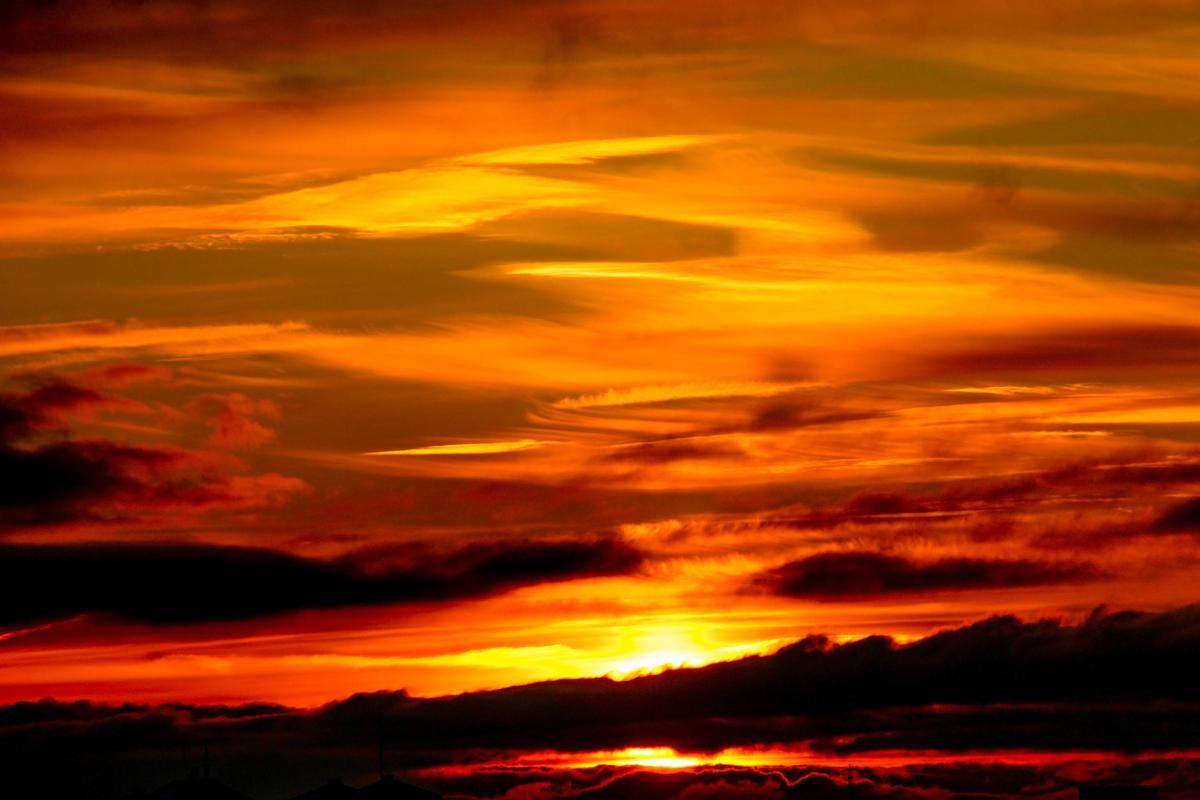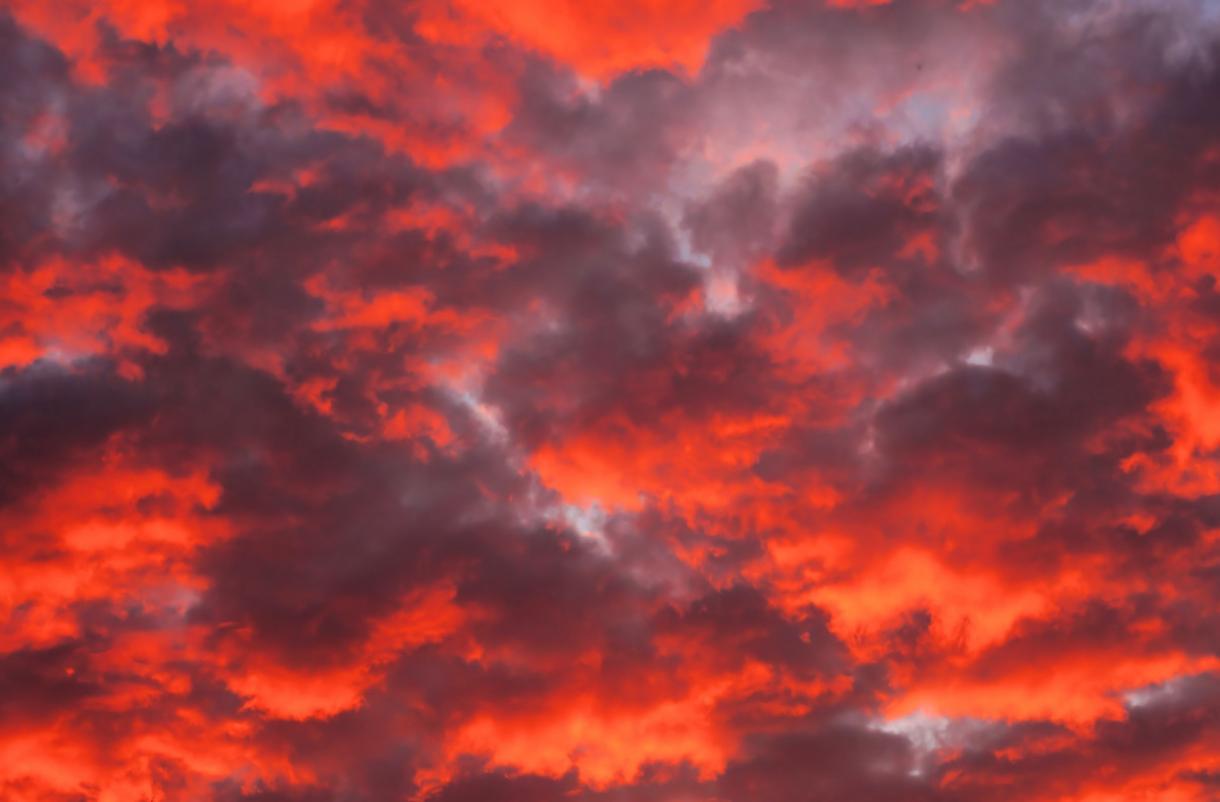What Causes a Red Sunset or Sunrise?


You may have heard the common idiom or some variation which claims a red sky at night is a sailor's delight, but a red sky at morning is a sailor's warning. This is a piece of conventional wisdom which relates to how the sky can indicate potential weather patterns. Not all conventional wisdom is accurate. Although not an exact representation of meteorological science, there is some truth to the red-sky idiom. Regardless of its relation to weather, the phenomenon of a red sunrise or sunset is a beautiful sight.
At thedailyECO, we learn more about red sky at night or morning by asking what causes a red sunset or sunrise?
What is a red sky at sunset or sunrise?
The coloration of the sky is affected by various factors, with the placement and intensity of the sun being of particular importance. We can see various shades of red, pink, orange, blue or white on the horizon. These shades are known as afterglow or foreglow, depending on whether the sun is setting or rising, respectively. They can create visually stunning spectacles for those of us lucky enough to witness them.
This phenomenon has its origin in the dispersion of sunlight as it passes through the Earth's atmosphere. During sunrise or sunset, the sun's rays must pass through denser levels of atmosphere. This causes shorter wavelengths of light to disperse more easily, such as violet or blue. Longer wavelengths such as orange and red, tend to be less dispersed and manage to arrive with greater intensity. This creates the characteristic red sky at sunset or sunrise.
Red sky phenomena are appreciated for their aesthetic beauty, but they are also important for meteorologists. They do not change weather patterns, but they can be indicators of them. Today, other forms of meteorological prediction are used which are more reliable. In the past, a red sky was a primitive way to guess weather patterns. Although not exact, it could be very useful to sailors, farmers and other workers.
Red afterglow or foreglow has a great deal of cultural significance. In addition to the red sky at night idiom mentioned in the introduction, it is a subject of various myths and legends, appearing in poetry, literature, painting and many other artforms.
Before we look at the causes of red sunsets and sunrises, you may want to know about a similar weather phenomenon caused by light diffusion. You can do so with our article on what is a sun halo?
What causes a red sunset or sunrise?
The red sky weather phenomenon is the result of complex light processes. These process cause dispersion or refraction of light in the Earth's atmosphere to varying degrees. During sunrise or sunset, the sun's rays must pass through more of the atmosphere compared to when the sun is high in the sky. Due to this longer path to travel, sunlight interacts with the molecules and particles present in the atmosphere.
The result of these interactions is redness in the sky. The process is as follows:
- The atmosphere acts as a dispersive medium, meaning air molecules scatter sunlight in different directions. This phenomenon is more noticeable for shorter wavelengths, such as violet and blue. These scatter more easily due to their higher energy levels.
- During sunrise or sunset, light from the sun must travel a greater distance through the atmosphere before reaching the Earth's surface. As a result, shorter wavelengths are filtered out because they scatter to a greater degree. At the same time, longer wavelengths such as orange and red remain relatively intact.
- The selective dispersion of wavelengths creates the characteristic warm tones of the afterglow or foreglow. Red, orange and pink colors become dominant in the sky, painting a stunning visual spectacle that changes as the sun moves closer to the horizon.
While dispersion causes different colors to appear in the sky, you may want to read our related article to find out why the sun is yellow?

Other factors that cause a red sunset or sunrise
While dispersion of light is the main determining factor in afterglow and foreglow phenomena, there are other factors which can change their diversity and intensity. Such factors include the following:
- Suspended particles: the presence of suspended particles in the atmosphere affects the way light is scattered. Such particles include aerosols, water droplets and dust. They can act as light filters, absorbing or scattering certain wavelengths and affecting the quality and intensity of the sun glow.
- Air pollutants: the amount of air pollutants such as smog or smoke has an impact on the appearance of the candle. These pollutants interact with sunlight in complex ways, influencing the amount of light that reaches the surface and altering the hues of the sky during dusk or dawn.
- Meteorological conditions: atmospheric stability and the presence of clouds are also important. Clouds act as reflectors, scattering and refracting light in unique ways. Learn more with our article asking what are clouds and how do they form?
- Altitude and geographic location: altitude and geographic location affect the appearance of the redness in the sky. For example, sunlight in mountainous areas can interact differently with the atmosphere due to variations in altitude, generating particular effects on the coloration of the sky.
You may know what a sunset looks like, but its true nature may remain elusive. Find out more with our article on why does the sun rise in the east?

How to see a red sunrise or sunset?
A red sky at night or morning is never guaranteed. However, there are some things you can do to give yourself a better chance of witnessing this beauty:
- Choose the right time: red skies occur mainly during sunrise and sunset. To enjoy the most intense and vibrant colors, it is advisable to be ready a few minutes before the sun rises or sets.
- Look for open, clear places: locations that offer unobstructed panoramic views of the horizon will provide a better chance of seeing a red sky.
- Monitor the weather conditions: weather conditions play a crucial role in the visibility of the sun's light. A clear sky allows sunlight to disperse more effectively, intensifying colors in the process.
- Experiment with different times of the year: the position of the sun in the sky varies throughout the year due to the tilt of the Earth's axis. This can affect the quality and duration of the red colors. Experiment with observing in different seasons to see how the colors and intensity change throughout the year.
- Use apps: there are apps and websites that provide information about the position of the sun and the moon phases at your location. These tools will help you plan your outings to maximize the red sunset experience.
- Be patient and enjoy the moment: red sunsets and sunrises can evolve slowly, so take the time to enjoy the show. Watch the colors gradually change as the sun gets closer to the horizon.
After knowing what causes a red sunset or sunrise, you may want to know about other spectacular phenomena our skies have to offer. If so, we encourage you to discover what is a sea of clouds and how does it form?
If you want to read similar articles to What Causes a Red Sunset or Sunrise?, we recommend you visit our Environment (other) category.







